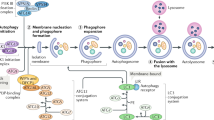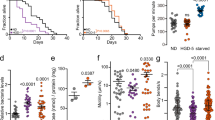Abstract:
Recent studies implicate similar proteins in the regulation of longevity in organisms ranging from yeast to mice. Studies in yeast and worms suggest that inactivation of glucose or insulin/insulin-like growth factor-1 (IGF-1) signaling pathways extends longevity by causing a shift from a reproductive phase to a non-reproductive maintenance phase involving the expression of many genes. These stress resistance pathways appear to have evolved to induce maintenance systems and promote longevity during periods of starvation. In yeast, mutations that decrease the activity of glucose signaling pathways extend longevity by activating stress resistance transcription factors that regulate the expression of genes involved in antioxidant and heat protection, glycogen storage, protein degradation, DNA repair, and metabolism. A remarkably similar set of proteins regulated by growth factors that control glucose metabolism is implicated in life span extension in worms, and possibly in flies and mice. Studies in worms and flies point to secondary hormones as mediators of the effect of insulin/ IGF-1 signaling on longevity, whereas studies in yeast and mammalian cells indicate that glucose or insulin/ IGF-1 may decrease longevity by directly down-regulating stress resistance genes. In yeast, longevity mutations postpone superoxide toxicity and mitochondrial damage. However, the small life span extension caused by the overexpression of superoxide dismutases and catalase in yeast and flies indicates that increased antioxidant protection alone cannot be responsible for the major life span extension caused by signal transduction mutations. Although we are only beginning to understand the molecular mechanisms that mediate life span extension, the similarities between longevity regulatory pathways in organisms ranging from yeast to mice suggest that insulin/ IGF-1 signaling pathways may also regulate cell damage and longevity in humans.
Similar content being viewed by others
Author information
Authors and Affiliations
Additional information
Received 18 March 2002; received after revision 22 April 2002; accepted 22 April 2002
Rights and permissions
About this article
Cite this article
Longo, V., Fabrizio, P. Visions & Reflections¶Regulation of longevity and stress resistance: a molecular strategy conserved from yeast to humans?. CMLS, Cell. Mol. Life Sci. 59, 903–908 (2002). https://doi.org/10.1007/s00018-002-8477-8
Issue Date:
DOI: https://doi.org/10.1007/s00018-002-8477-8




